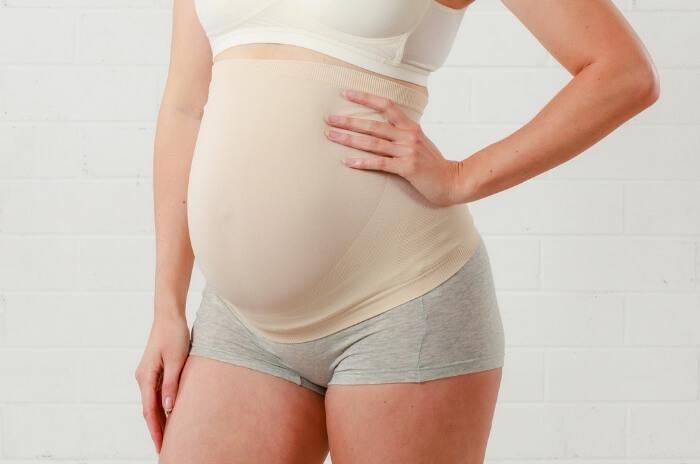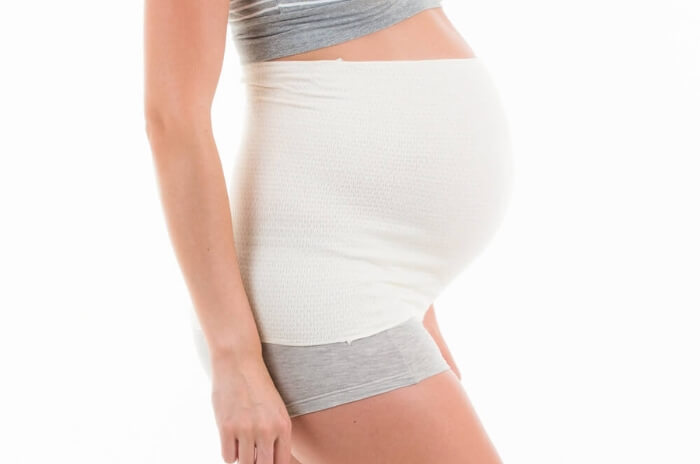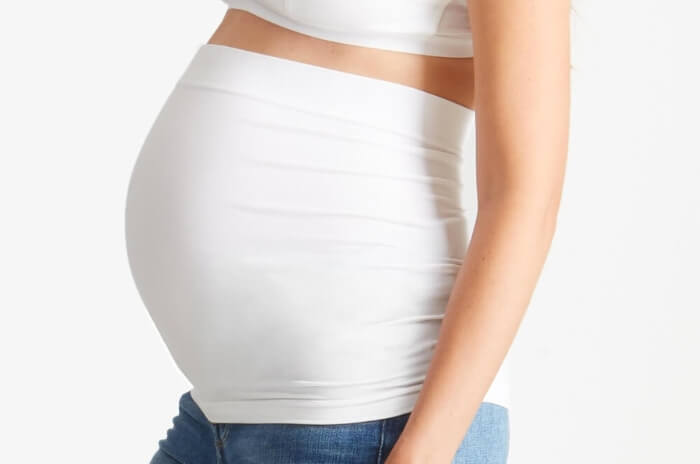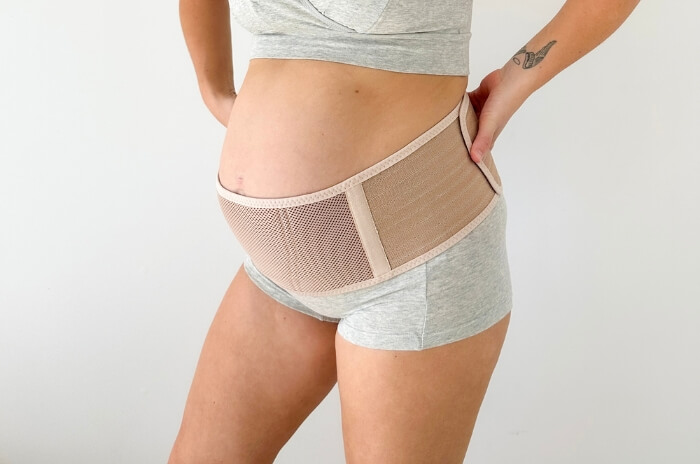
What is a Belly Band?
Belly Bands are a wide, flexible, circular strip of fabric to wear over your baby bump for coverage and gentle support.
The main types or styles of pregnancy belly bands include:
Belly Warmer Band
These are also known as haramaki. These traditional garments date back to Japan's 12th century samurai. The Japanese believe that having a warm stomach is the key to staying well. Keeping the body core warm helps the body distribute warmth and energy. This style of belly band is thin and lightweight, designed to be worn against the skin as an additional layer.

Jersey or Seamless Belly Band
This is the most common type of maternity belly band. They hide unbuttoned pants and help keep them up. As your baby bump grows, you will find that your tops begin to shrink, and the belly band makes a great layering piece to keep your tummy covered.

Support Belly Band
These are designed to provide varying degrees of compression and support. Some offer belly lift which reduces abdominal and back pain. These are generally engineered in a seamless fabric with panels of varying tension to compress and support and to be worn discreetly under clothing.

What is a Belly Belt?
Belly belts are adjustable support belly bands. Belly belts go under your belly to help alleviate the baby weight and provide firmer stabilising support which can help reduce back pain. They generally have a velcro fastening so that you can customise your fit and level of support.

What is a Maternity Cradle?
A maternity cradle is a belly belt that also has an upper strap that goes over the bump and cradles the belly.

Belly Band vs Belly Belt
A belly band is more flexible and lightweight than a belly belt which can be more rigid. Belly bands generally only offer a mild compression whereas a belly belt is more supportive as they are designed to hold the belly up and evenly distribute the baby weight.
As a belly band is generally a strip of fabric, they are thinner and more discreet under clothing. A belly belt is more customisable to adjust for your level of support needed as your pregnancy progresses and can usually also be worn after birth to aid recovery.
| Belly Band |
Belly Belt |
| Flexible fabric |
Customisable fit |
| Mild compression |
Lifts the belly and stabilises the pelvis |
| Discreet under clothing |
Can also be worn over clothing |
Why Wear a Belly Belt?
More than two thirds of pregnant women experience low-back pain and almost one fifth experience pelvic pain.
The gentle compression of a belly band helps support the uterus and reduce discomfort from movement (think how a sports bra helps your breasts when jogging).
Benefits of wearing a belly belt include support for your lower back and abdomen. By lifting the belly, the weight is distributed across the abdomen and lower back which evens out your centre of gravity which can result in
- improved posture
- improved balance
- lowers the risk of falling
- reduced bladder pressure
- stabilises the pelvis
- helps with pelvic girdle pain
Sacroiliac Joint Pain
The sacroiliac joint connects the spine and the pelvis, and its primary function is to absorb shock between the upper body and the pelvis and legs.
During pregnancy, hormonal changes cause ligaments in the sacroiliac joints to loosen and stretch for childbirth. The added baby weight can also stress these joints as well as a change in your gait when you walk.
When the joint is too loose, this can cause lower back pain and/or leg pain. A brace, aka belly belt, can be wrapped around under the belly and pulled snugly to stabilise the area.

Round Ligament Pain
The round ligaments are located on either side of the uterus and connect to the pelvis to hold the uterus in place.
During pregnancy these ligaments stretch, increasing in diameter and length to support the uterus, which can increase from the size of lemon to that of a watermelon.
It is common in the second trimester, especially those having twins or triplets, to experience cramping or an occasional sharp spasm in the area. Avoiding sudden movements and wearing a support belly belt can help ease round ligament pain.
After the postpartum period, the uterus returns to its normal size, and the ligaments too, also shrink back to their non-pregnant state.

Lastly
As a belly band / belt is a compression garment you should always consult with your doctor.
It is generally recommended that a belly belt is only worn for 2-3 hours at a time to prevent overdependence.
